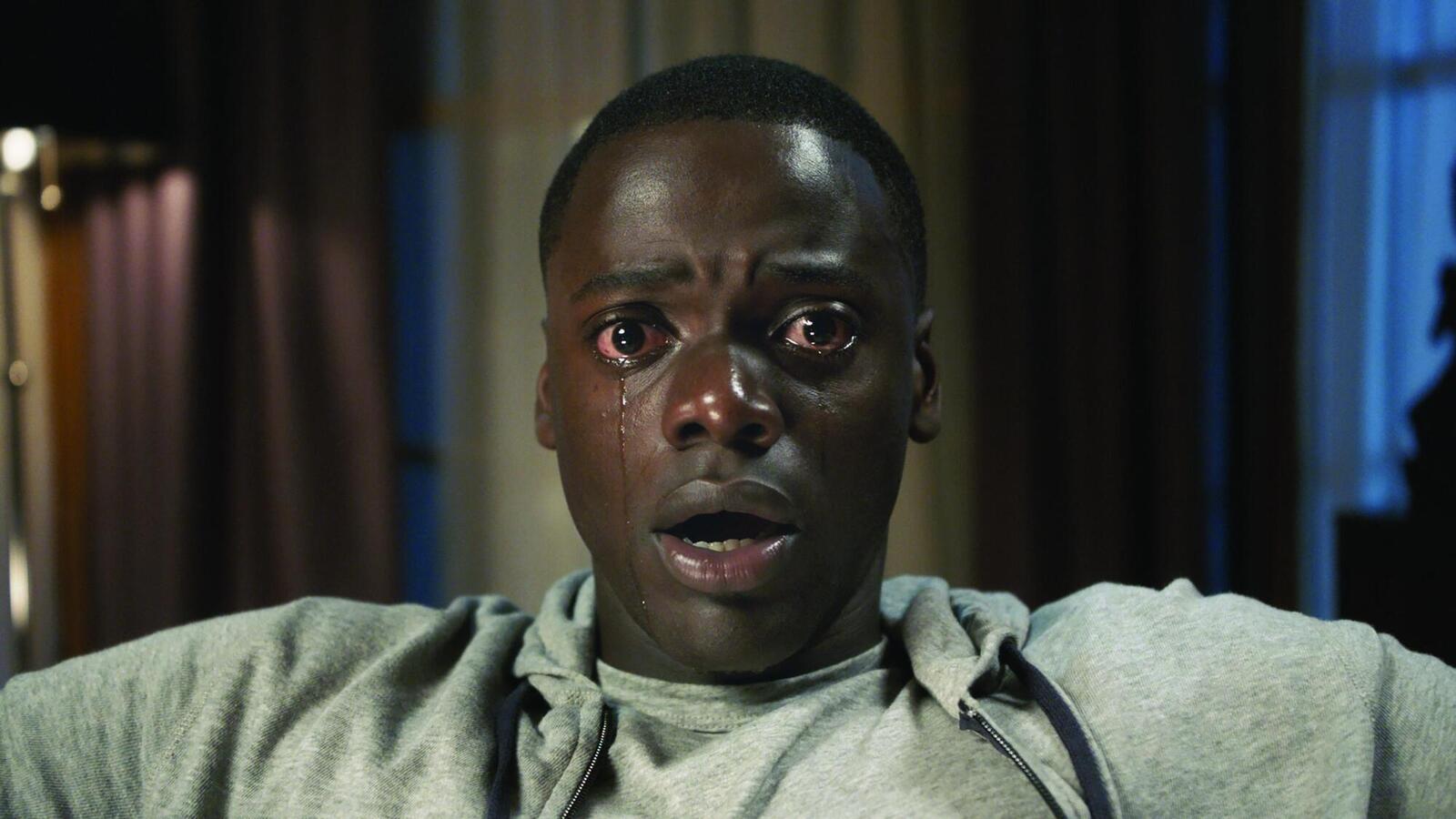
Horror is the movie genre most positioned to take advantage of the fears and desires in the deepest parts of the human psyche. It’s also the genre that has pushed the boundaries of what can and should be seen on the screen, particularly in recent years. Horror films, particularly those released in the 1980s and afterward, have worked very hard to plumb the hearts and minds of viewers, bringing out those things that many people are afraid to face in their everyday lives and laying it all out on the screen.
These films stay in the mind long after the final scene, demonstrating horror’s enduring power. 'Bone Tomahawk' Bone Tomahawk combines Western and horror, which keeps its generic elements in a productive tension. There’s no doubt that this film aims to traumatize its viewers, particularly once its protagonists are taken captive by a cannibalistic group of Indigenous Americans.
The scene in which one of their numbers is brutally killed is arguably one of the most viscerally horrifying scenes in all of horror cinema, particularly since the film at no point cuts away, instead subjecting the viewer to the spectacle of a human body being scalped and bisected while still alive. 'The Wicker Man' The original The Wicker Man is still rightly seen as one of the best folk horror films ever made. It's a tale about a devoutly religious cop who goes to an isolated Scottish isle in search of a missing girl only to find himself part of a sinister pagan ritual.
The film is remarkably adept at creating an atmosphere of slowly encroaching dread, but what makes it so truly traumatizing is the ending, in which Sgt. Neil Howie is burned alive as a sacrifice in the hopes that his death will bring fertility back to the island. 'Speak No Evil' Though the 2024 remake of Speak No Evil is effective in its scares, it pales in comparison to the original Danish version.
In the original, a Danish couple’s new friendship with another couple soon turns into something far more dangerous and deadly, particularly once they go to a remote country house. Christian Tafdrup keeps the tension building throughout the film until the deeply upsetting and terrifying ending, one which leaves the viewer certain that the sinister serial killers at the film’s heart will continue their horrifying pursuit of murder. 'The Witch' Robert Eggers made his entry into the horror genre with The Witch , which immerses the viewer in the haunted world of early America when the forest was a site of danger and menace.
Anya Taylor-Joy stars as Thomasin, a young woman whose family is banished to the woods, where they fall under the malign influence of a witch. The film is deeply folkloric and atmospheric, and it nicely captures the sense of terror that many in early America felt when faced with untamed nature. There’s also a sinister goat named Black Phillip, who may be the devil.
'The Fly' David Cronenberg has made a career by making viscerally unsettling and boldly disgusting films. Take, for example, The Fly , which stars Jeff Goldblum as a scientist, Seth Brundle, who accidentally turns himself into a terrifying amalgam of fly and human. Even though the film makes significant use of body horror to instill a sense of dread and disgust in the viewer, like all good traumatizing horror movies, it also has more than a note of tragedy.
Seth ultimately isn’t a bad person but, instead, someone brought low by humanity’s desire to always seek out new knowledge. 'Tusk' Tusk is very much a Kevin Smith film, focusing on Justin Long’s arrogant podcaster Wallace Bryton, who ends up falling into the hands of a deranged man who sews him into a walrus costume. Beneath the silly premise, however, there’s a genuinely very disturbing film, particularly once Bryton ends up in the walrus costume and is essentially conditioned to become more beast than man.
At its root, Tusk is a film about how tenuous humanity is and how little it takes to push one into the realm of the bestial. 'Jeepers Creepers' Justin Long has made a bit of a career out of playing young men who end up crossing paths with dangerous creatures, and one of his best films remains Jeepers Creepers . He plays Danny Jenner, who, along with his sister, ends up being pursued by the sinister being of the title, who preys on humans to replenish his own body.
The most traumatizing part of the film is undoubtedly the ending, which shows that Danny’s head has been hollowed out by his tormentor so that the beast can take his eyes, a pretty somber demise for a film’s main character. 'In a Violent Nature' The slasher film is, in many ways, the most reliable horror subgenre, and it gets a new edge in the Canadian film In a Violent Nature . Like many other films of this type, it focuses on a group of teens who end up getting murdered after they resurrect Johnny from his grave.
What makes this film so remarkably and compellingly traumatizing is that the viewer is often sutured into Johnny's point of view, making one feel as if one is somehow complicit in the slaughter unfolding on-screen. 'Saint Maud' Before Morfydd Clark became famous for portraying Galadriel in Amazon’s The Rings of Power , she earned praise for the horror film Saint Maud . In that film, she plays Maud, a young woman whose devout Roman Catholic faith drives her to desperate measures in her efforts to engage in spiritual salvation.
Her delusions ultimately lead her to murder and, in the film’s final very traumatizing scene, her self-immolation as she continues to hold onto the delusion of her closeness to the divine. 'Funny Games' Not every American remake of a European original succeeds, but Michael Haneke’s remake of Funny Games is an exception (mostly because he also directed the original). The plot is fairly simple: a family is taken captive by a pair of charismatic but monstrous boys who torture them.
The film’s repeated breaking of the fourth wall, however, explains its traumatizing appeal. It constantly forces the viewer to confront their own complicity in viewing such horrifying and malicious events. 'A Serbian Film' Few films have excited as much controversy and disgust as A Serbian Film .
At the heart of this twisted tale is an adult film star who is entitled to take part in a snuff film. Very soon, things begin to take ever more twisted turns, and there is hardly a sadistic or cruel act that this film doesn’t explore in unsettling and, at times, nauseating detail. It’s the type of film that seems to want to criticize the violence of pornography but sometimes ends up being the very fetish it seems to criticize.
'Martyrs' Religious iconography and themes permeate many of the most traumatic horror movies, perhaps none more so than the French film Martyrs . It’s a film all about young women and the abuses they endure, but it’s also about the lengths to which some people will go to gain access to the divine. The scene in which one of the main characters is flayed alive and enters an ecstatic state is rendered in exquisitely horrifying detail.
The film as a whole is designed to shock and terrify, and in both respects, it more than succeeds. 'Cannibal Holocaust' Cannibal Holocaust is truly infamous, as much for the events that unfolded behind the camera as in front of it. Like many other films of its type, it’s all about the dangers of going to unexplored parts of the world, in this case, the Amazon, which is inhabited by flesh-eating tribes.
Gore abounds in this Italian production, and there are times when it is so realistic one could be forgiven for thinking it’s actually taking place. The film’s commentary about the proliferation of violence in the movies may not always work, but its horror certainly does. 'The Human Centipede' Though there are by now several entries in The Human Centipede franchise, the original remains the most troubling.
Directed by Tom Six, the first entry focuses primarily on a trio of tourists whose trip to Germany takes a horrifying turn when they’re kidnapped and sewn together by a scientist yearning to make a human centipede. The Human Centipede , as well as its sequels, ends up being one of those horror films that eschews any form of social or philosophical commentary and instead just relishes the chance to be gross and disturbing. 'Hostel' Eli Roth’s Hostel is one of the most notable of the 2000s horror films that leaned heavily into body dismemberment.
In this case, the unfortunate victims are American tourists who are imprisoned by a sinister Slovakian organization that essentially allows the wealthy to torture and kill others for their twisted amusement. Beneath all of the gruesome torment and gore, the film does actually have a message about the ways those with power enjoy destroying others, but it sometimes gets lost in the visceral terrors in which the film constantly indulges. 'The First Omen' A s its name suggests, The First Omen is a prequel to the beloved horror film The Omen .
This film focuses on a young novice nun named Margaret who, upon arriving at an orphanage in Rome, finds out that she is part of a sinister conspiracy to bring the Antichrist into the world. The film is judicious in its use of body horror, which makes it so effective. Just as importantly, it is also a deeply disturbing look at the nature of pregnancy and how one’s body can sometimes slip out of control.
'Get Out' Jordan Peele burst onto the horror scene in a big way with Get Out, his horror film about Daniel Kaluuya ’s Chris Washington, a young Black man whose visit to his girlfriend’s parents’ house turns nightmarish once it’s revealed that they’ve been taking the brains of young men of color and putting them in older white bodies. It’s one of those horror films that’s so traumatizing precisely because it lines up so neatly with the deep veins of racist violence running through American society and history. 'Annihilation' Directed by Alex Garland, Annihilation focuses on a group of scientists who undertake an investigation of a strange anomaly known as the Shimmer.
Once they enter it, however, they soon find themselves contending with an alien force that distorts their very DNA. This type of horror movie gets under the skin and stays there, and there are a number of striking and terrifying visuals, including a mutated bear that screams in the voice of a human. This film is a fascinating and unsettling exploration of the boundaries of the human.
'Hereditary' Hereditary , Ari Aster’s first feature film, showed that he was going to be one of his generation’s great horror filmmakers. It’s a film filled with great performances — particularly from Toni Collette — but also with mysterious events, sinister hauntings, and a family legacy that will ultimately destroy everyone involved. The ending is particularly chilling and, unlike so many other horror movies, it doesn’t leave the viewer with the sense that the world has been restored to balance but instead with the understanding that nothing will ever be the same.
'Midsommar' Ari Aster took another bite at the horror apple with Midsommar . Florence Pugh delivers a remarkable performance as Dani, a young woman who goes with her boyfriend and a group of friends to Sweden, where they fall into the grasp of a strange cult. Aster uses the blazing northern sunlight to highlight the darkness at the heart of its characters, both the tourists and the cultists.
The ending also sears itself into the viewer’s eye as Dani lets go of her past and embraces a fiery and uncertain future. Thomas J. West III earned a PhD in film and screen studies from Syracuse University in 2018.
His writing on film and TV has appeared at Screen Rant, Screenology, FanFare, Primetimer, Cinemania, and in a number of scholarly journals and edited collections. He co-hosts the Queens of the B's podcast and writes a regular newsletter, Omnivorous, on Substack. He is also an active member of GALECA, the Society of LGBTQ Entertainment Critics.
.














